All products featured are independently chosen by us. However, SoundGuys may receive a commission on orders placed through its retail links. See our ethics statement.
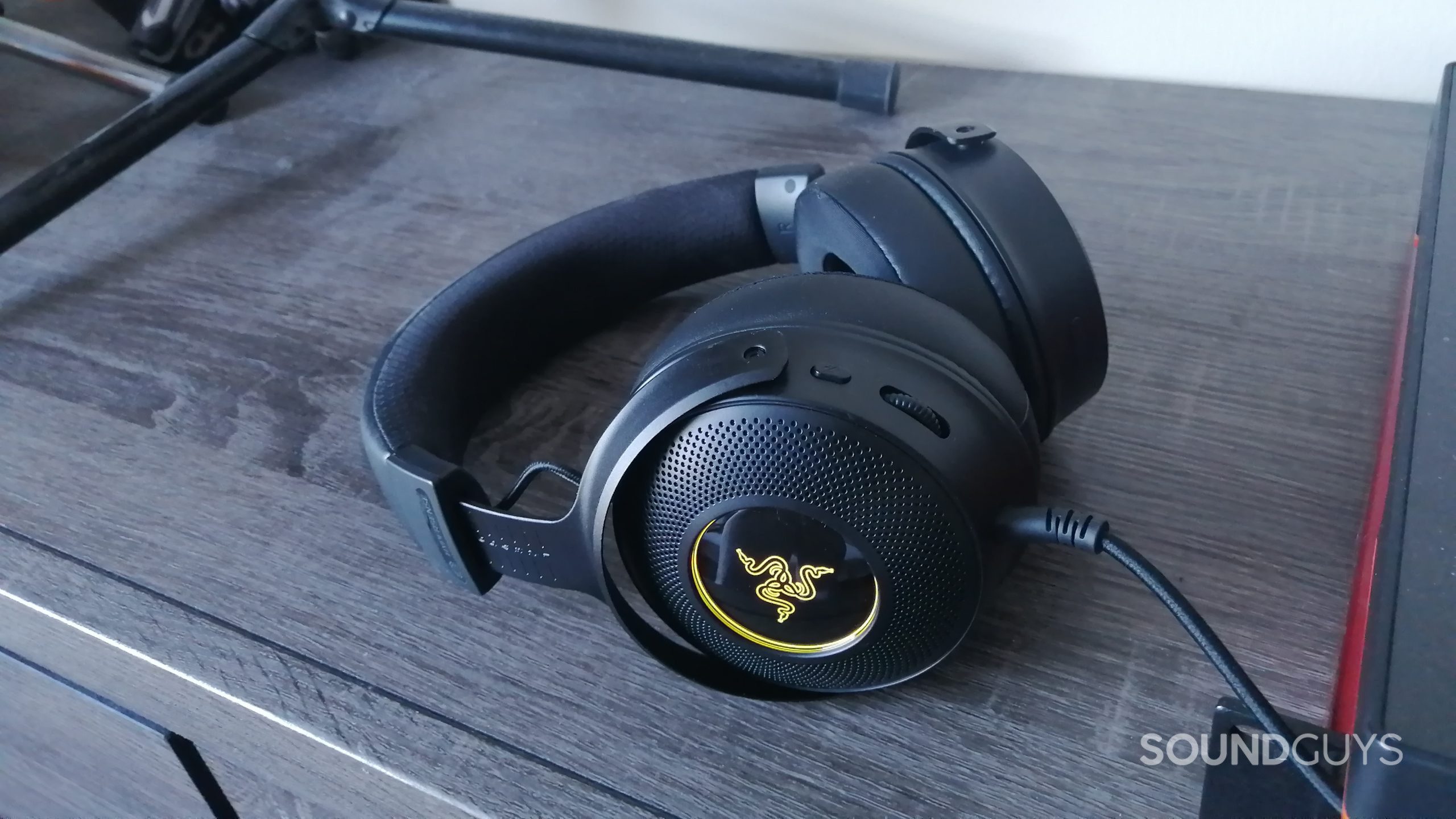
Razer Kraken V3 HyperSense Review
January 31, 2022
Razer Kraken V3 HyperSense
The newest lineup of Razer Kraken headsets is here, including its latest headset to feature HyperSense haptic technology. The Razer Kraken V3 HyperSense is a beefed-up version of the Razer Kraken V3 with much of the same features but with the addition of haptic feedback. It’s a wired gaming headset that is comfortable for long sessions, sounds great in a wide variety of use cases, and features the Razer-exclusive THX Spatial Audio.
So does the addition of haptic feedback make it worth the asking price?
Who is the Razer Kraken V3 HyperSense for?
- PC gamers using Windows are the core target for this headset, thanks to its robust set of software features and USB-A connector (no 3.5mm here).
- PlayStation and Nintendo Switch owners will also have a good time with this headset, but will miss out on some Windows-exclusive features.
- If you like headsets that do something unique, you’ll be intrigued by the HyperSense haptics.
What is the Razer Kraken V3 HyperSense like?
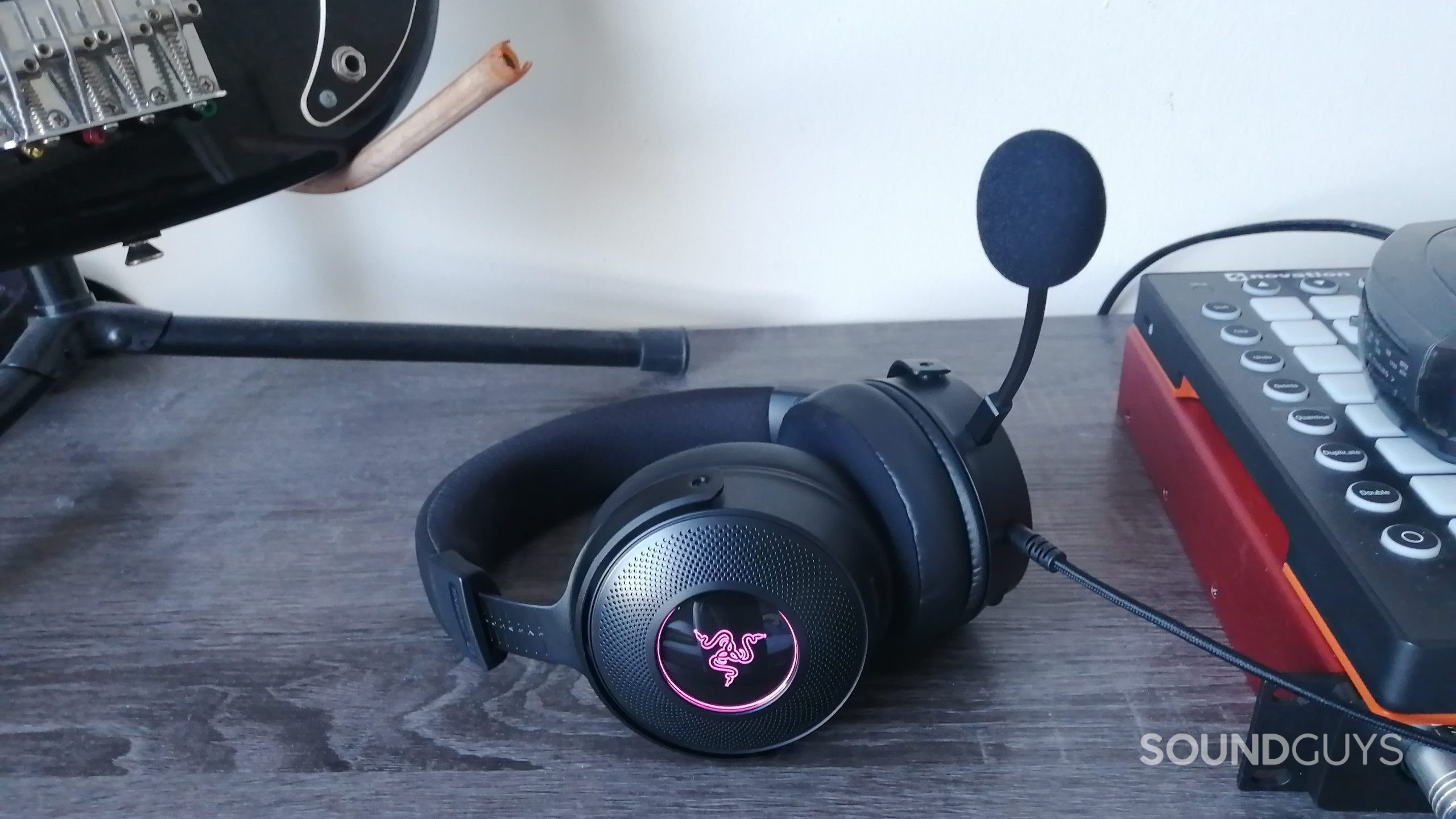
The Razer Kraken V3 HyperSense is a unique addition to Razer’s lineup of Kraken headsets. It’s well designed and comfortable enough to wear for extended periods. The headband features numbered notches that make it easy to adjust evenly, and to recreate the desired adjustment repeatedly. It also features a volume scroll wheel on the left headphone that makes it a breeze to adjust on the fly; the only downside is that it’s fairly easy to accidentally nudge when taking the headset on and off.
The standout selling feature of the headset is the HyperSense vibration built into both headphones. It offers haptic feedback triggered by bass frequencies in the audio signal. Although this feature may intrigue and delight some, I find it fairly lacking. On lower settings, it can offer a subtle addition to the lower frequencies and up your sense of immersion. At higher intensities, it feels like it clashes strongly with the main drivers, becoming more distracting than immersive. However, Razer’s decision to make HyperSense easily adjustable between off, low, medium, and high intensities at the push of a button is definitely an improvement over previous headsets with the feature.
What can the Razer Synapse software do?

Included with the headset on Windows is the Razer Synapse software, which offers a number of features that greatly improve the headset. It includes several EQ profiles with nicely subtle changes that fit the headset surprisingly well (the “Music” EQ preset does wonders to make the listening experience more enjoyable without overdoing it), as well as an option to create your own with a 10-band EQ. There are also options for adjusting the microphone sensitivity, RGB lighting, and other aspects of the headset’s sound. However, users should be aware that Windows Defender may falsely flag it as a Trojan during installation.
Related: Razer gaming headset guide
The Razer Synapse software allows you to use THX Spatial Audio, which is the key feature of Synapse. I’m generally skeptical of virtual surround sound, but this feature works surprisingly well. THX Spatial Audio creates a wider, more dynamic mix in games like Dark Souls 3 and Halo: The Master Chief Collection. Of course, this is somewhat down to user preference and is game dependent. For some games, it may tarnish the goals of the sound designers. It’s likewise rubbish for music, significantly hampering the finely crafted mixing and mastering of almost any song I listen to.
Is the Razer Kraken V3 HyperSense good for gaming?
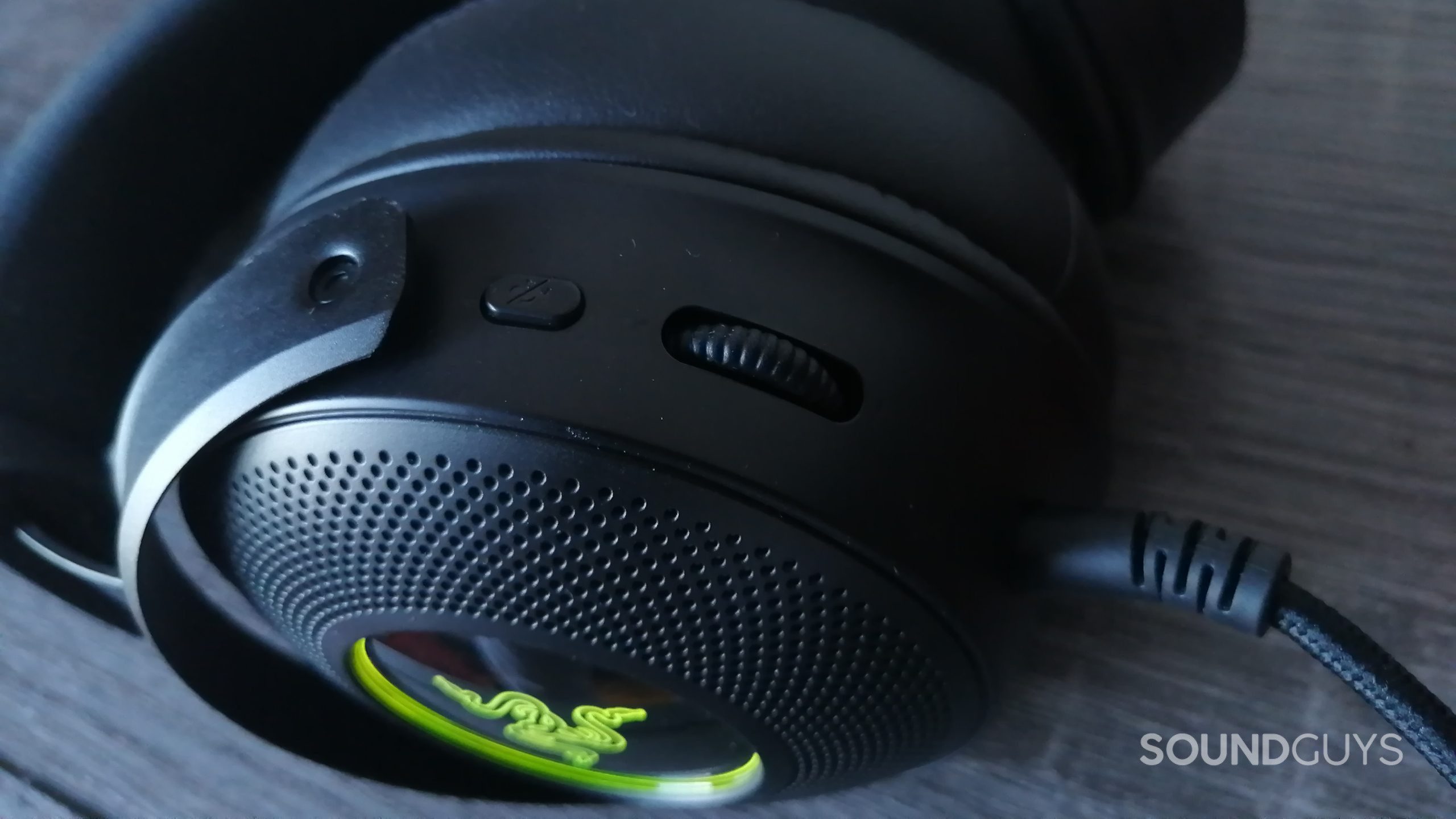
The Razer Kraken V3 HyperSense is clearly designed with gaming in mind. Thanks to the additions of THX Spatial Audio and the HyperSense haptics, the headset is an excellent choice for people looking for different ways to enjoy their games. Even with those features turned off the headset is comfortable for hours-long sessions, and sounds great while doing it. The detachable microphone and single cable also make it very easy to work with for voice chat, with everything being nearly plug-and-play once Razer Synapse is installed.
How does the Razer Kraken V3 HyperSense connect?
The Razer Kraken V3 HyperSense connects to your PC or game console using a 2m (6.74ft) USB-A cable. Although comfortable for desktop use, it’s far too short for playing from my couch. Luckily this issue is easily remedied with the USB extension cable. There is no 3.5mm connection option.
How is the sound isolation on the Razer Kraken V3 HyperSense?
Loading chart ...
The Razer Kraken V3 HyperSense has adequate sound isolation for a headset of this price. Although it’s nowhere close to a headset with active noise canceling (ANC), it still does a fairly good job of blocking out higher frequencies. I find it comfortable to use even when someone else is in the same room listening to their own music over speakers.
How does the Razer Kraken V3 HyperSense sound?
Loading chart ...
Overall I am impressed with the sound that comes out of the 50mm dynamic drivers in the Razer Kraken V3 HyperSense. The bass is present but not overbearing, and the mids and highs sound great. The frequency response of the headset follows our ideal consumer curve rather well with the exception of the sub-bass frequencies. The Kraken V3 HyperSense is a closed-back gaming headset, so you won’t get the same effect as you might from open-back cans.
Lows, mids, and highs
When it comes to music, the headset is surprisingly versatile. I am impressed by the treble detail it offers, which shines through when listening to the cymbals and crashes on something like I Bet You Look Good on the Dance Floor by the Arctic Monkeys. This also creates a great sound while listening to percussion on some more bass-oriented dance tracks, such as Mantra by Noisia, or Body Parts by Melt Yourself Down. Additionally, the included EQ profile for music listening fits the headset very well, providing a nice low-mid bump that rounds out the sound perfectly. For a gaming headset in this price range, it sounds quite good.
How is the Razer Kraken V3 HyperSense microphone?
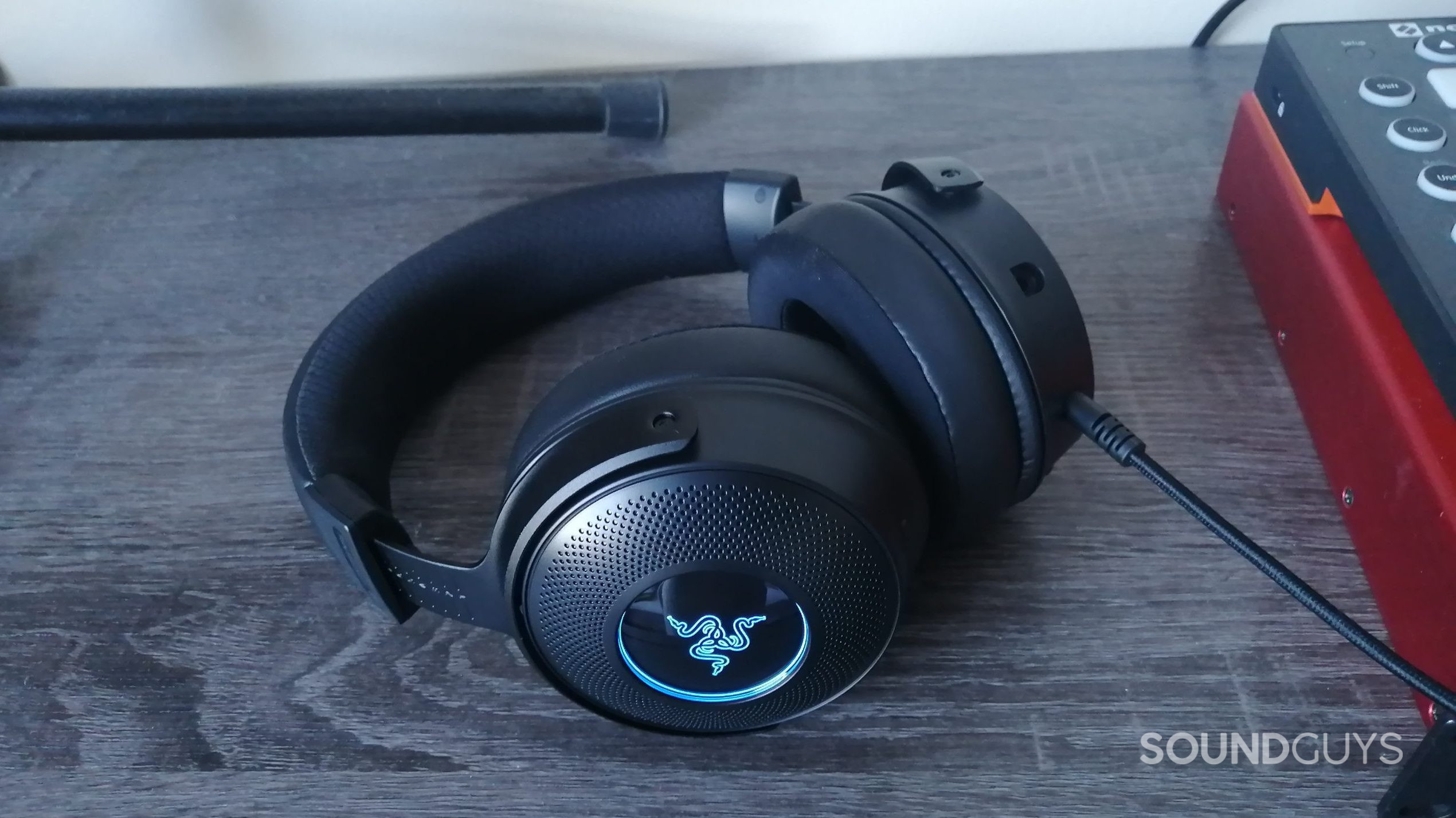
The microphone is around what you would expect from a gaming headset. It sounds solid enough, is easy to position, includes padding to reduce pops, and is entirely detachable. It’s convenient and fairly standard in this product category. The included software also offers options for adjusting the microphone’s sensitivity, including voice clarity, voice normalization, and ambient noise reduction.
Razer Kraken V3 HyperSense microphone demo (Ideal):
Razer Kraken V3 HyperSense microphone demo (Office):
How does the microphone sound to you?
Should you buy the Razer Kraken V3 HyperSense?
Overall the Razer Kraken V3 HyperSense is a decent wired gaming headset. For anyone out there interested in unique non-standard features it’s an excellent choice. The THX Spatial Audio and HyperSense haptic vibration make it one of the most unique options out there. For the price, the frequency response works well in many different types of games and genres of music. It’s big on comfort and convenience, usable for long sessions. The single USB cable and detachable microphone make it easy to set up for Discord gaming nights.

However, considering that not everyone will find the HyperSense haptics useful or enjoyable, you should definitely consider the cheaper Razer Kraken V3 first before you decide. It has roughly the same quality of audio, still includes the THX Spatial Audio, and it’s cheaper. That being said, if such a unique feature still excites you then this headset can still be an excellent choice.
What should you get instead of the Razer Kraken V3 HyperSense?
If you’re not convinced the Razer Kraken V3 HyperSense is the headset for you, other wired gaming headsets out there may suit you better. As mentioned above, the Razer Kraken V3 is at the forefront of what I’d recommend if you care to stick with the same manufacturer. Alternatively, the Razer Kraken X offers some of the same features at an even more inexpensive price point.
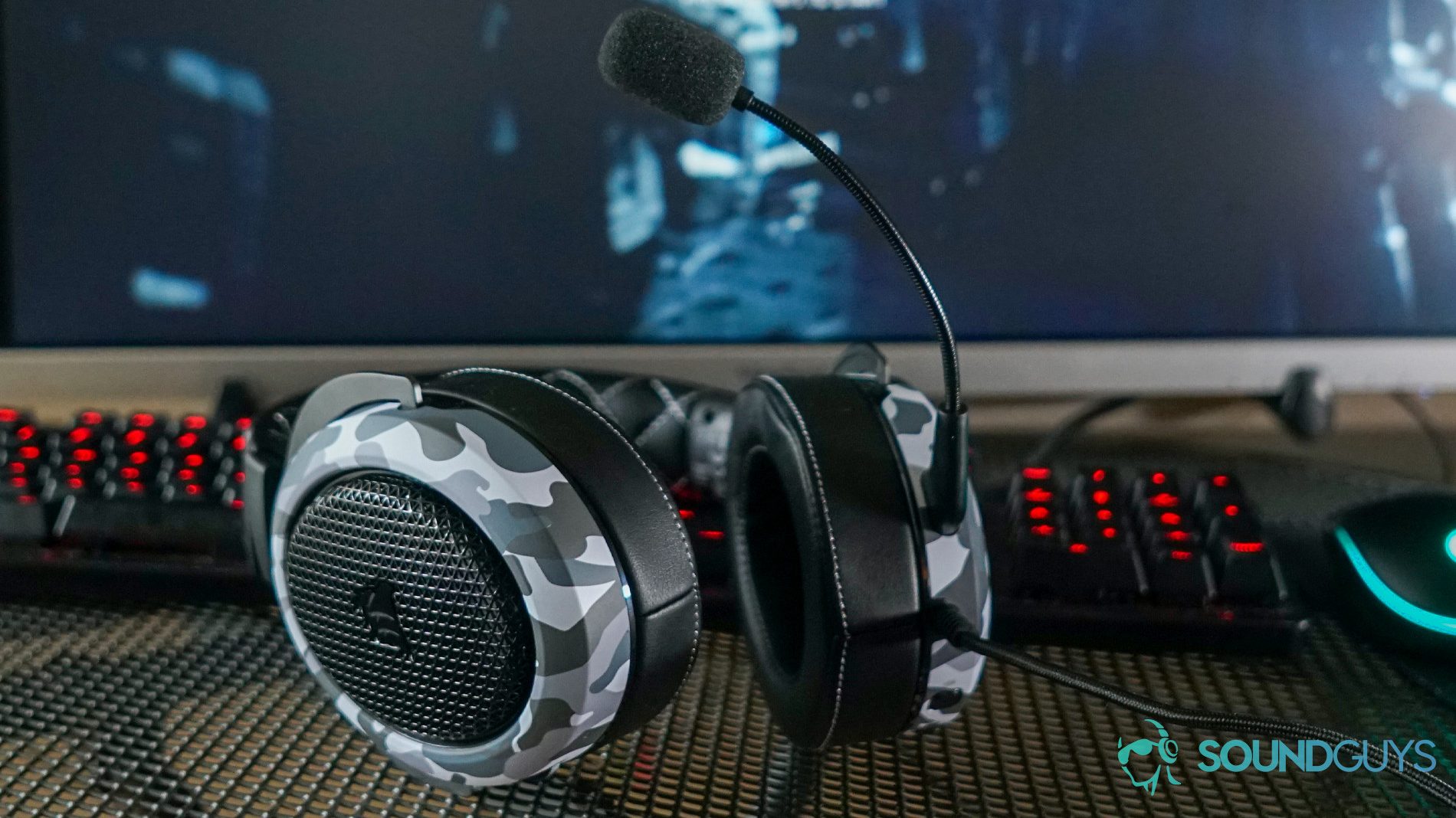
Those who want to jump ship from Razer altogether may want to look at the Corsair HS60 Haptic since you don’t need to download any software to use it, and it has a similar feedback effect. The sound of the HS60 Haptic is similarly bass-heavy, so if that appeals to you with the V3 HyperSense, then you’ll like it on Corsair’s headset too.
JBL Quantum 350 wired headset. You lose out on haptics here, but you get the benefit of wireless connectivity, JBL QuantumSURROUND, and the option to plug in via 3.5mm if you want to connect it to a portable media player for whatever reason.
Thank you for being part of our community. Read our Comment Policy before posting.